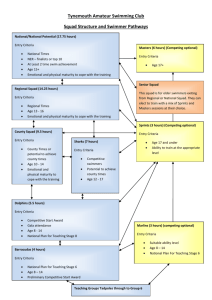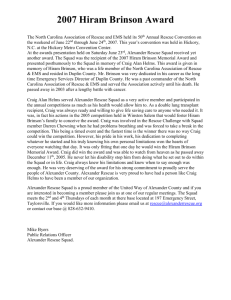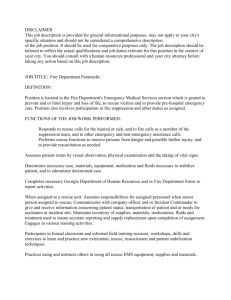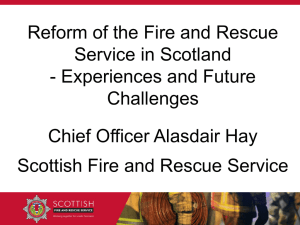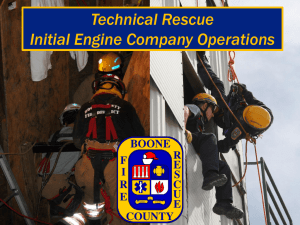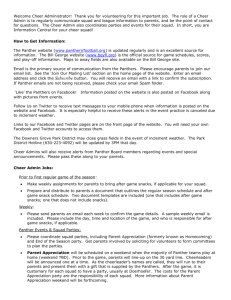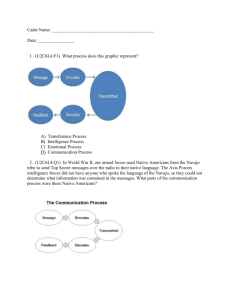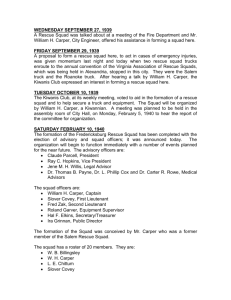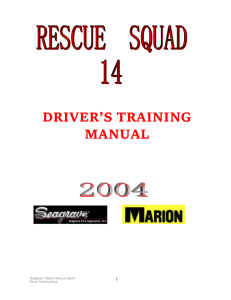Idlewood Assessment - Neshaminy School District
advertisement
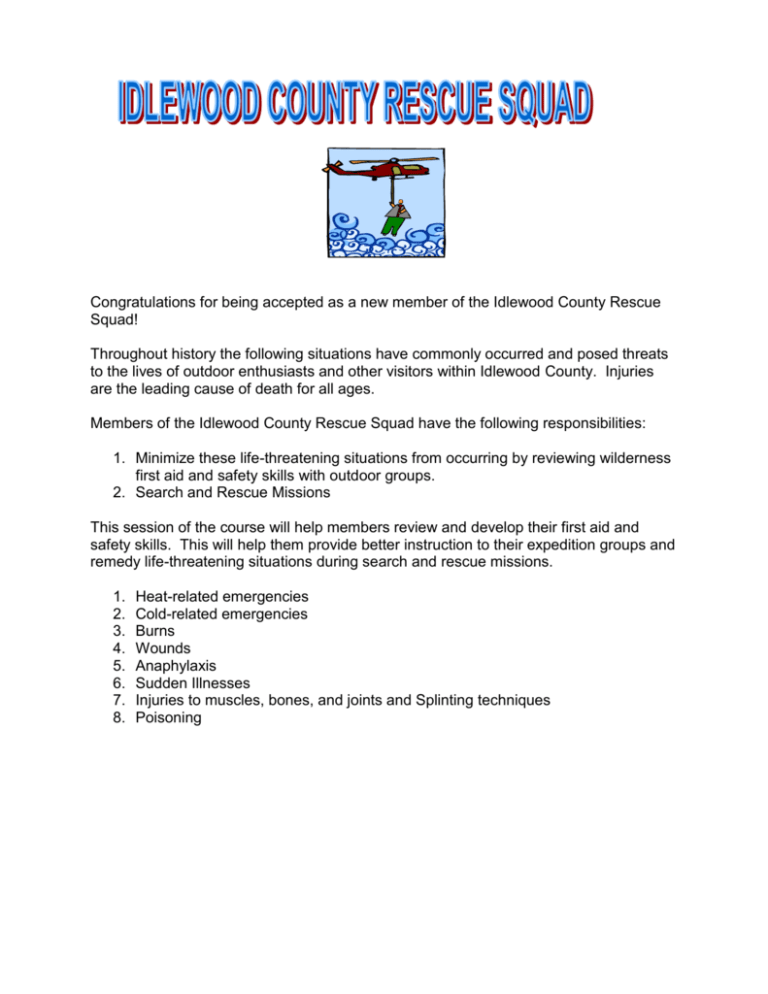
Congratulations for being accepted as a new member of the Idlewood County Rescue Squad! Throughout history the following situations have commonly occurred and posed threats to the lives of outdoor enthusiasts and other visitors within Idlewood County. Injuries are the leading cause of death for all ages. Members of the Idlewood County Rescue Squad have the following responsibilities: 1. Minimize these life-threatening situations from occurring by reviewing wilderness first aid and safety skills with outdoor groups. 2. Search and Rescue Missions This session of the course will help members review and develop their first aid and safety skills. This will help them provide better instruction to their expedition groups and remedy life-threatening situations during search and rescue missions. 1. 2. 3. 4. 5. 6. 7. 8. Heat-related emergencies Cold-related emergencies Burns Wounds Anaphylaxis Sudden Illnesses Injuries to muscles, bones, and joints and Splinting techniques Poisoning 1) It is a hot 95 degree day within Idlewood’s Great Neshaminy Desert, a group of four hikers get stranded without water and without protection from the sun. Your rescue squad gets the distress call at 2:00 PM in the afternoon. What are the three (3) heat related injuries that may result from overexposure to heat and dehydration? What specific care would you provide for each of the three (3) above injuries? List one injury per line and the care for each. Be specific. ________________ : ___________________: ___________________: 2) At 5:00 PM temperatures are hovering at the 30 degree mark. Your rescue squad finally reaches the stranded group of climbers on Mt. Hood, but the weather has taken a turn for the worse and you’re whole group is now stranded in white-out conditions. What are the two (2) cold-related injuries that may result from over-exposure to cold? What specific care would you provide for each of the two (2) above injuries? List one injury per line and the care for each. Be specific. ___________________: ___________________: 3) Members of our rescue squad have experienced both types of wounds (open and closed). For you to be an effective senior member of the rescue squad, you must be able to identify the different wounds and the specific care that needs to be provided for each. A climber slipped from the cliff face and smashed her back against the wall. Identify the type of closed wound and the specific care that you would provide. Fly-fishermen commonly acquire four (4) different types of open wounds. Identify each wound and describe to the fisherman how to provide care specific to that open wound should such a case arise in the back-country. _________________: _________________: ____________________: _________________: 4) Members of our rescue squad have seen different degrees of burns throughout their experiences here in Idlewood County. For you to better help people in need, you must be able to differentiate the severity of each burn. and the care that needs to be provided for each. Distinguish the three (3) different degrees of burns and include the symptoms that separate one from the other. ______________________: ______________________: ______________________: Identify 5 of the proper steps you would take when caring for a burn. STOP! What 3 of things you should avoid when treating a burn. 5) You are stationed at Neshaminy High School as part of their School Crisis Team. You receive a call from the cafeteria telling you that a student is having an allergic reaction known as anaphylactic shock. You know the student is allergic to peanuts, so you bring the student’s epinephrine auto-injector. List 5 signals do you would expect to see when you arrive at the scene? Explain the 6 steps you would follow to assist with an epinephrine auto-injector. Be specific with your answer and put in chart format. You class has just arrived at the entrance to Idlewood when all of a sudden 3 different students experience sudden illness. In the sudden illness wheel describe the care you would administer and include at least 3 specific steps for each illness that you would take: In the center spot what is common for all. Another type of sudden illness you may encounter is called a “brain attack” or better known as a __________________. What is the acronym that you should use to help recognize the signs and symptoms. Be specific to what you should see from the victim for each letter. ____ ____ ____ ____ 6) Many sections of the trail and river system in Idlewood County’s Wilderness Area are extremely rough and rugged. Broken legs and ankles are common emergencies that occur due to this terrain. We must be experts in dealing with these situations if we want to continue to have the most efficient rescue squad in the nation. Describe what materials you could use and how you would apply the following types of splint on a broken tibia and fibula (lower leg): Splint: Splint: Splint: 7) As we know if a person is expected to have some type of substance overdose we should call the Poison Control Center and 911. People can be victims of various forms of poison when spending time in Idlewood County’s Wilderness Area. According to our manual, some of the possible bites/stings that could pose problems for park users are insect, spider, and snake bites. What care would you provide for each? Insect: Spider: Snake: One of our rescue squad members was bitten by a small deer tick. How should he remove the tick? It is now 4 weeks later and he thinks that he may be suffering from Lyme’s Disease. He doesn’t know the signs and asks you to identify them for him: Now that you have completed your Idlewood task, take a moment to reflect on what you have learned in First Aid. How will this information impact you and those around you? In the following paragraph include: What is your level of comfort in First Aid? What are your strengths and weaknesses? How can you increase your First Aid knowledge?
